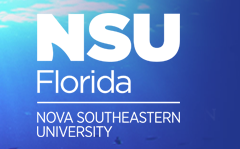
Biology Faculty Articles
Document Type
Article
Publication Date
6-19-2021
Publication Title
Quaternary International
Keywords
Dental calculus, Ancient DNA, Animal oral microbiomes, Metagenomics
ISSN
1040-6182
First Page
1
Last Page
6
Abstract
The field of dental calculus research has exploded in recent years, predominantly due to the multitude of studies related to human genomes and oral pathogens. Despite having a subset of these studies devoted to non-human primates, little progress has been made in the distribution of oral pathogens across domestic and wild animal populations. This overlooked avenue of research is particularly important at present when many animal populations with the potentiality for zoonotic transmission continue to reside in close proximity to human groups due to reasons such as deforestation and climatic impacts on resource availability. Here, we analyze all previously available published oral microbiome data recovered from the skeletal remains of animals, all of which belong to the Mammalia class. Our genus level results emphasize the tremendous diversity of oral ecologies across mammals in spite of the clustering based primarily on host species. We also discuss the caveats and flaws in analyzing ancient animal oral microbiomes at the species level of classification. Lastly, we assess the benefits, challenges, and gaps in the current knowledge of dental calculus research within animals and postulate the future of the field as a whole.
Additional Comments
© 2021 The Authors.
Creative Commons License

This work is licensed under a Creative Commons Attribution-NonCommercial-No Derivative Works 4.0 International License.
NSUWorks Citation
Ozga, Andrew T. and Claudio Ottoni. 2021. "Dental calculus as a proxy for animal microbiomes." Quaternary International , (): 1-6. doi:10.1016/j.quaint.2021.06.012.
Table S1
ORCID ID
0000-0003-4540-7106
ResearcherID
D-1147-2018
DOI
10.1016/j.quaint.2021.06.012



Comments
Bioinformatic analyses were performed on the Galileo supercomputing cluster of Cineca, with support of Elixir-Italy and the HPC@CINECA program. This study has received funding from the European Research Council (ERC) under the European Union’s Horizon 2020 research and innovation programme (grant agreement no. 101002811 to CO, University of Rome Tor Vergata, and grant agreement no. 639286 to Emanuela Cristiani, Sapienza University of Rome).